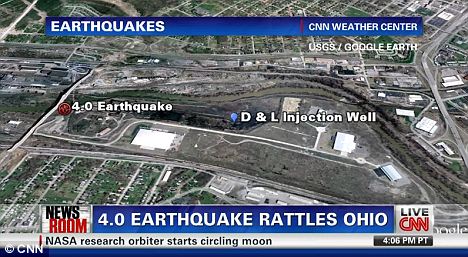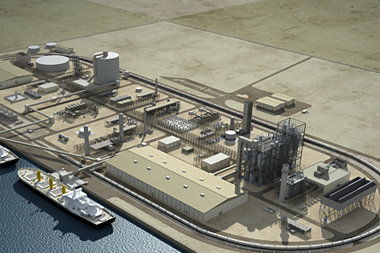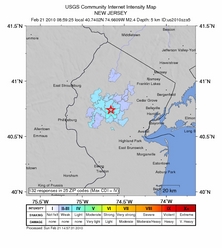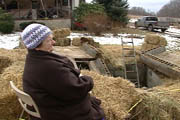CO2 Capture Pipeline? Just NO!
November 2nd, 2021

Summit Carbon Solutions, LLC is looking to build billions in pipelines, ostensibly to ship CO2 out of state.
Here’s another map, from the “Presentation-Materials” below — look how far into Minnesota it goes from the south, and even from the west:

Yeah, right. Great idea… NOT! Whether it gets built or not, for sure they’re working to get federal grants and loans! Here’s their plan, the handout and presentation from recent Iowa meetings, and after the Iowa meetings, it’s open season, they can file a project proposal with the Iowa Utilities Board at any time:
I fired off this missive to the Iowa Utilities Board:

To look at the IUB’s Summit Carbon Solutions pipeline docket, go HERE, and in that press release, click on the link for Docket No. HLP-2021-0001 and click on the left side the “FILINGS” and there you’ll find a LOT to read! These two studies are among the filings — issues and risks are not new, but here’s a few new studies, newer than what we had back in the Mesaba Project days:
I cannot believe that anyone would regard this as a feasible concept, but what with the millions being shoveled at toadies like Great Plains Institute to promote CO2 capture and storage (nevermind it just isn’t a thing), it’s no surprise:

I guess they can’t read:

We learned a LOT about CO2 capture and storage during the years of Excelsior Energy’s Mesaba Project. CO2 capture is absurdly expensive to capture even a little CO2, and most cannot be captured. And then what? For the Mesaba project, the “plan” they offered captured a tiny amount and then took it to the plant gate — and then what? Who knows, nothing further was disclosed other than a map showing allegedly suitable sites, but no, there was nothing real. This map:

Their plan? Read it and guffaw, snort, hoot and holler:
And Excelsior Energy’s press release:
And check this, about CO2 leaks:
Some other info:
Now remember, when we’re talking about Carbon Capture and Sequestration, there are three distinct parts:
1) Capture (this has been focus of industry studies)
2) Transport
– $60k/inch/mile = $1,080,000/mi for 18″ pipe
– Repressurization stations along the way
3) Sequestration ($3-10/ton, per Sally M. Benson)
And this is all old news:
CO2 pipelines? It’s a red herring!
Do we really need to go through this again??
And some more old news:
Economic Modeling of Carbon Capture and Sequestration Technology
Hydro & Geological Monitoring of CO2 Sequestration Pilot
Electricity without CO2 – Assessing the Costs of CO2 Capture and Sequestration
Geologic Carbon Dioxide Sequestration – Site Evaluation to Implementaion
Ohio Earthquakes & Fracking
January 1st, 2012
Earthquake in Youngstown, Ohio, the epicenter just a hop, skip and a jump from the D&L Injection Well, pictured above.
Elisa Young in Youngstown sent me this link this morning, noting that “on this Diane Rehm segment the industry specifically states on the air that earthquakes of 2.0 or less (like they can control an earthquake in progress) are beneficial to the drilling company because it shows them the fracking is working. …but fracking and injection don’t induce seismic activity in Ohio… ” The section on earthquakes starts at 28:12.
If you don’t have a copy yet, if you haven’t read it, get with it, learn about gas migration and earthquakes, errrrr… seismic events (copies are getting harder to find, price is going up, but I’m glad because it means that people are paying attention and reading this MUST READ book):
Earthquakes have becoming more and more common in Ohio, as in Arkansas, Pennsylvania, Oklahoma, and yes, there is a trend, a connection, and it’s GAS. In this Youngstown, OH case, it’s related to injecting fracking waste into the ground near a fault. How on earth did they get a permit to do this, anyone with half a brain would know that if you’re pumping in, there is bound to be a response!
Ohio’s “Are you ready for an earthquake?” page!
Here’s a sample, from the Columbus Dispatch:
State links quakes to work on wells
By Joe Vardon
The Columbus Dispatch Sunday January 1, 2012 11:34 AM“The 5-mile radius, we were told by our geologists, is an adequate buffer zone” for the fault line, Zehringer said. “There are four other wells, none of them active, but we’re not going to allow any activity to take place in these wells.”
Michael Hansen, of the Ohio Seismic Network, said that even though Northstar No. 1 was shut down Friday, there is still potential for more quakes, although the magnitude of yesterday’s quake may have relieved some of the pressure near the fault line.
There are 177 injection wells throughout the state. Zehringer and other officials, speaking on a New Year’s Eve conference call, said the single Youngstown well is the only one of its kind that’s been related to seismic activity since the state started using them in the 1970s.
Kasich officials also stressed that the months-long shaking in Youngstown is not a result of hydraulic fracking — a procedure used to extract oil and gas out of rock formations such as the Marcellus and Utica shale. Discoveries of oil and gas in the shale rock in eastern Ohio has sparked hopes for an economic boon in the state’s Appalachian region.
State Rep. Robert F. Hagan, D-Youngstown, called for a statewide moratorium on injection wells. Hagan said he asked the U.S. Environmental Protection Agency to intervene because of the possibility of another quake.
“We don’t want to overreact,” said Zehringer, who suggested that a wider moratorium in well activity “could devastate the economic livelihood of thousands of Ohioans.”
The magnitude 4.0 quake that struck yesterday afternoon in McDonald, outside Youngstown, is the largest of the 11 quakes that originated there, Hansen said.
Residents said a boom accompanied the shaking yesterday. Sheriff’s dispatchers from several counties in the area said there were no immediate reports of damage.
Rick Simmers, chief of oil and gas management for the ODNR, said a daily average of about 5,000 42-gallon barrels of brine water — a byproduct of oil and gas drilling — were pumped into the well, down to 9,200 feet. He said a majority of the water comes from Pennsylvania wells.
Gov. John Kasich, who is vacationing with his family in Florida for the holidays, was in constant contact with Zehringer and other senior staff members throughout the day yesterday, communications director Scott Milburn said. “The governor directed director Zehringer to put public health and safety first and to make a response that is reasonable and appropriate and based on science,” Milburn said.
The well’s owner, Northstar Disposal Services LLC, which agreed to stop injecting brine into the well on Friday, applied for and received licensing under the Strickland administration, Kasich spokesman Rob Nichols said. The No. 1 well has been active since December, 2010, according to Nichols.
Information from The Plain Dealer was included in this story.
Earthquake in New Jersey?
December 2nd, 2010
This is the “artist’s conception” of the PurGen coal gasification plant proposed for Linden, New Jersey.
Last week there was an earthquake just off the cost of New Jersey and New York:
Small earthquakes in N.J. prompt calls to police, but no reported damages
The US Geological Survey has a site to report earthquakes:
What does this Linden coal gasification plant have to do with an earthquake? Well DUH, PurGen wants to pump the earth full of CO2. They claim that “Carbon dioxide will then be removed from the gas and safely stored offshore in a permanent repository.”
In support of this nonsense, they’re trotting out our friend from the Mesaba Project, Dan Schrag:
For information on impact of gas storage on seismic activity, check out “Gas Migration” which is THE source for the real poop. In short, pumping the earth full of gas, i.e. CO2, triggers seismic activity, CCS = earthquakes.
What’s interesting to me is that this is the second time this year for New Jersey:
Earthquake Jolts New Jersey
By Therese Crowley
2/22/2010BERNARDSVILLE, NJ – Sunday morning reverie at 8:59 a.m. was punctuated by a big BOOM in Bernardsville- and Basking Ridge- and at least 25 more zip codes, according to the US Geological Survey. Within an hour, an earthquake measuring 2.6 on the Richter scale was confirmed by the Lamont Doherty cooperative Seismographic Network (LCSN). The quake was centered at Peapack and Gladstone, New Jersey, 13 miles WSW of Morristown.
In Bernardsville, the quake was experienced as a ‘boom. BOOM!!! shake.’ In this reporter’s old stone cottage, the shaking rang bells. The quake shook Bernardsville Police headquarters, where Dispatcher 35 was fielding calls from residents, and cautioning that an aftershock may follow. Some 100 residents called in the first hour. No damage was immediately reported, although an earthquake of mild magnitude can cause hairline cracks in structures.
The region sits on the Ramapo Fault Line, and Lamont Doherty estimates the depth of the quake at 3.1 miles, measuring the impact as mild, at ll-lV level intensity. Still, residents were excited and rattled. The first aftershock followed at 12:31pm, measuring 2.3 on the Richter scale. As with the original quake, the first alert of something happening within the earth was a booming rumble, followed by a shaking sensation. The first aftershock was centered just one mile from the morning tremor.
The quake was the talk of the Somerset Hills YMCA; many people felt it, but few had heard confirmation of the event. One Dad reported, ‘We were watching TV with the kids and heard the boom—I made them turn the TV down, and we listened and felt the shake. It was something!’
The Sunday morning earthquake follows a series of tremors that moved the ground in Far Hills and Bernardsville from Friday, February 5th to Sunday, February 7th. One of those quakes measured 1.2, but Sunday morning’s 2.6 is orders of intensity greater.
An aftershock took place around 12:30 p.m. on Sunday measuring 2.3 on the richter scale.
Residents who would like to report their experience can go to the US Geological Survey Website and fill out the ‘Did You Feel It?’ form, at http://earthquake.usgs.gov/earthquakes/dyfi/
Gas in wells in Dimock Twp. PA
January 22nd, 2009
A while back, in Dimock, PA, a woman’s well blew up just a little down the road from where they were doing gas drilling… funny how that works. Now it seems they’re admitting a relationship between the two, and are giving people water, those who took their water, shook it up, and LIT IT! They “just felt unsafe,” yeah, I guess… It seems it’s taking a LONG time for anything to happen here.
From: Wells tested, cause of explosion sought in gas exploration in Susquehanna County
Yeah, just a bit of an understatement…
Breaking news: Gas mining company provides water after methane found in private wells
Published: Thursday, January 22, 2009 12:47 PM EST
“We felt it best to take a step back and take a comprehensive look,” he said.



